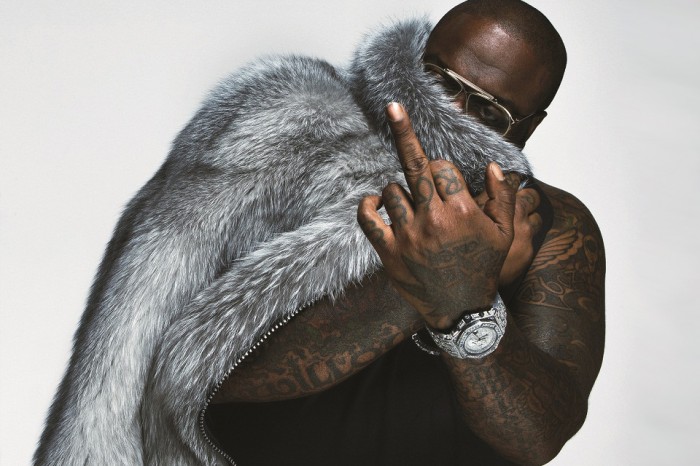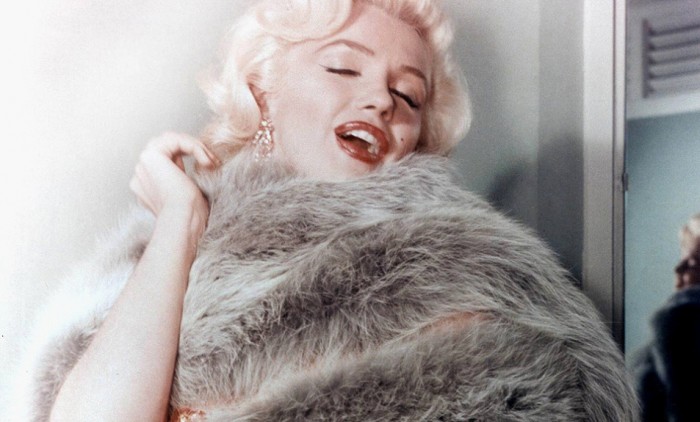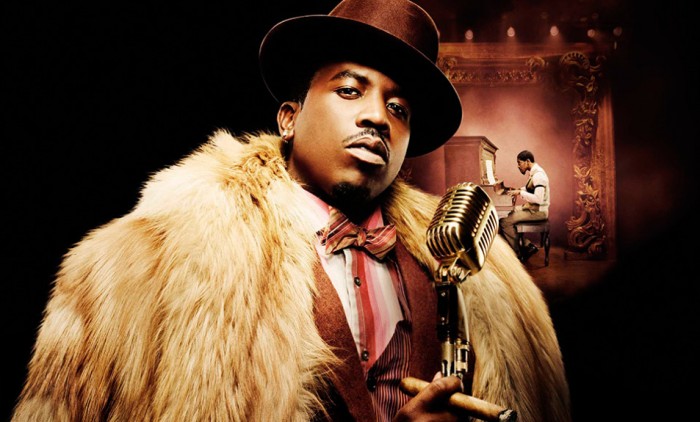
On the big list of bad topics around the fashion dinner party table, nothing gets food flying like dropping the F-bomb (that’s “fur,” not the other one).
For some, fur is the epitome of elegance: luxurious, timeless and remarkably practical in the cold. For others, it’s like wearing a crime scene. With such ironclad opinions on both sides of the debate, this is one area of controversy that just won’t die (unlike the animals involved). Yet the question of whether fur is morally acceptable in a society that eats meat, wears leather and generally asserts its dominance in all areas of the natural world is a relatively recent one. Go back as little as 60 years and the only outrage you’d find was how much it cost.
Nowadays the wearing of fur is increasingly confined to niche markets. Of these, two stand out: high fashion and hip hop. While these are both areas with a great deal of influence on contemporary street style, their broad acceptance of fur has never made that jump. Even in a time when cruelty-free faux fur can be produced to a standard some would consider comparable to the real deal, the connotations of wearing it have lead to a rejection in most mainstream streetwear culture where other animal-derived products have flourished. Why the double standard? To understand that, you need to open up the history books…
Mankind has worn fur for centuries; that much goes without saying. In the early years this was a matter of survival, but it didn’t take long for an element of exclusivity to creep in. With their incredibly high cost, the softest pelts like ermine, sable and mink were originally reserved for the very richest nobility. Then, as the phenomenon of the wealthy merchant classes grew in the 14th and 15th centuries, there came an explosion in the number of people with hard cash to drop on such luxuries.
Faced with an invasion of aspirational common folk encroaching on their style, the upper classes panicked and brought in a series of “sumptuary laws,” specifically banning anyone not a part of their noble clique from wearing the furs they prized the most. As a result, owning such garments conferred not only financial worth but elite status, and those that did so gained a whole new level of outward superiority.

In the time that followed, fur faded in and out of fashion. The surge in supply that came from the colonization of North America brought about a 250-year boom for the trade, but by 1850 European tastes had changed and the Native American tribes crucial for trapping the animals had been largely decimated by war, disease and genocide. In the 1920s and ’30s, a fur coat was the height of femininity, yet under the specter of two World Wars such extravagance was frowned upon and it wasn’t until the post-War period of the 1950s that it really returned as the decadent dress of choice – a look made infamous by icons like Audrey Hepburn, Marilyn Monroe and Raquel Welch.
By the ’60s, wild fur trapping had all but dried up, leaving intensive, purpose-built farms to take over as the predominant supplier to the world. This led to the birth of the Animal Rights Movement shortly after, throwing a negative spotlight on the practice for the first time. But, as the capitalist nirvana of the ’80s rolled around, fur fashion moved back on top as the ultimate combination of carefree wealth and excess. It was towards the end of this period that hip hop – following on from the carnivalesque “pimp culture” of the ’70s – began to take an interest…
What resulted was a situation remarkably similar to that of Middle Age Europe. All of a sudden this icon of rich, white success had become the trophy of young, black youth, and while the two groups shared different means of making that purchase, the reason behind it was largely the same. Here was a tangible, glaringly obvious display of wealth to flaunt in front of your peers and potential detractors. Yet for the hip-hop community, it became an act of defiance – a statement that the private world occupied by the rich was being torn open from underneath, and this time there weren’t any laws to prevent the new blood from dressing the same way.

Today this trend continues unabated. Kanye, Jay Z, Pharrell, Outkast, even Macklemore – almost without exception, hip-hop’s major (and minor) players choose to be photographed in fur, draped in decadent skins like the kings and queens of old. They want you to know they’ve arrived at the top table and that they worked hard enough to get there that animal rights aren’t exactly high on their list of priorities. It’s that underlying sense of urgency that keeps fur of all kinds out of mainstream street fashion. Authenticity is everything, and that’s built on a cocktail of material cost and “fuck you” attitude, not feel or looks.
In fact, so powerful are the connotations of fur that even the suggestion is too much for many to bear. Aside from the odd trimmed hood on a winter coat, faux fur is largely seen as a cheap imitation rather than a viable alternative. When A$AP Rocky stepped out on 106 & Park in a Balmain racoon jacket or when Wiz Khalifa kitted up with Cam’Ron in the video for “The Bluff,” there were no clothing designers rushing to produce a more palatable, affordable, death-free alternative for the masses. Waka Flocka Flame posed nude for PETA, calling on the world to abandon animal slaughter for fashion, yet you won’t find many brands using synthetic mink for their winter collection or artificial chinchilla in their lookbook.
The reason? Ultimately, fur isn’t so much a material to make clothes from as a means to get a message across, and no amount of technical innovation or imitation can change that. In modern streetwear, “fur” is either so ridiculous that it could never be believable (think Jeremy Scott or the new LeBron), or it’s something designers won’t touch with a 50-foot pole. While almost all other aspects of hip-hop culture find their way into street fashion in one way or other, fur is still a bridge too far, and without the means to separate the politics from the product it will always be a costume of sorts, and never simply clothing.
